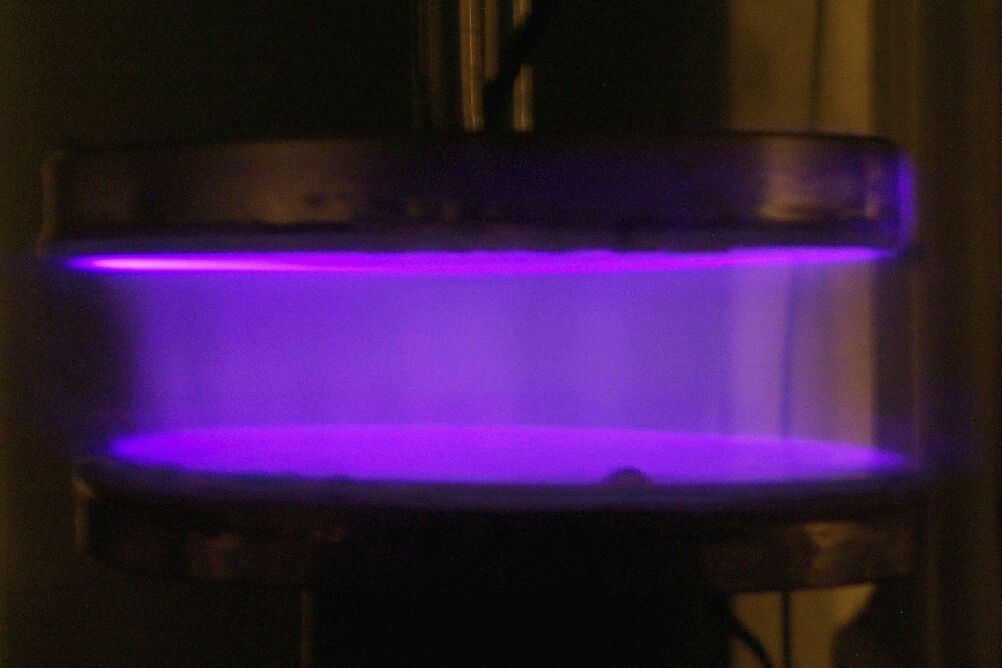 |
 |

|
|
|
|
The Applied Plasma Technology Laboratory (APTL) is part of ODUís Electrical and Computer Engineering Department as well as the Laser And Plasma Engineering Institute. LPEI, a research institute belonging to the Batten College of Engineering & Technology, is a facility dedicated to research on lasers, plasmas and their applications. Research topics at APTL include the generation of non-equilibrium, low temperature plasmas, characterization of plasmas using electrical and spectroscopic diagnostics methods, the interaction between microorganisms and cold plasmas, and material processing by plasmas . Below are few examples of ongoing research projects:
Atmospheric pressure cold plasmas for biology and medicine Preliminary research is showing promising possibilities to use low temperature plasmas in medical applications such as wound healing, tissue engineering, surface modification of biocompatible materials, and the sterilization of reusable heat-sensitive medical instruments. These fascinating developments are posing many technological challenges and are bringing to the forefront fundamental questions regarding the mechanisms of interaction between living organisms and plasma. At the same time, as low temperature non-equilibrium plasmas come to play an increasing role in biomedical applications, reliable and user-friendly sources need to be developed. These plasma sources have to meet stringent requirements such as low temperature (at or near room temperature), no risk of arcing, operation at atmospheric pressure, preferably hand-held operation, low concentration of ozone generation, etc. At APTL we are carrying out research on plasma source development and on their biomedical use including decontamination, dental applications, and evaluation of the suitability of plasma for wound treatment. One of our main devices is the “plasma pencil” (see picture). This device is capable of emitting a stable, cold plasma plume several centimeters in length. We have been using the plasma pencil in various biomedical applications of interest.
Using nanoseconds pulses to generate uniform non-equilibrium plasmas
The electron energy distribution in non-equilibrium discharges plays the most important role in defining the chemistry in the plasma. It is through electron impact excitation and ionization that the charged particles, excited species, and radicals are produced. Increasing the electrons number density and their energy translates to an increase in the production of reactive species and UV radiation emission. To achieve this increase of ionization and to extend the electron energy distribution to higher values, short high voltage pulses have been used. Using short duration pulses has the advantages of keeping a low average power and not substantially increasing the gas temperature. At APTL we have been using nanoseconds high voltage pulses for many years to produce large volume atmospheric pressure plasmas and plasma jets. One of our jets, the Plasma Pencil, has been shown to launch very high velocity plasma balls or bullets in room air. These plasma bullets can travel several centimeters to deliver reactive species to the surface of a sample.
Barrier Discharges&Their Applications 
VUV
Generation & Applications
Air Plasma Generation and Maintenance
|
|
Send e- mail to ekara002@odu.edu with
questions or comments about this web site.
|